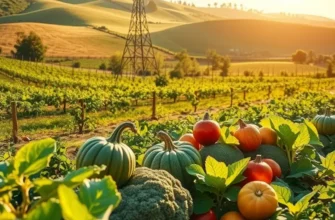Busy schedules often leave little room for daily cooking, making mealtime a challenge for many families. Enter casserole bases—your secret weapon for hassle-free, nutritious dinners. By prepping versatile casserole bases in advance, you can create a variety of hearty meals with minimal effort, ensuring everyone at the table gets a warm, satisfying dish. Let’s explore how to develop these convenient bases and turn them into delicious casseroles that fit into your hectic lifestyle.
Building Your Casserole Foundation

Crafting a delicious casserole begins with a solid foundation of compatible ingredients. Harmonizing proteins, grains, and vegetables is crucial for creating a versatile base. Start by selecting proteins such as chicken, beef, or plant-based options like tofu and lentils. These offer rich textures and contribute to nutritional balance.
Grains serve as the backbone, absorbing flavors and enhancing the heartiness of the dish. Consider using rice, quinoa, or pasta, each bringing its unique characteristics. Quinoa adds a nutty taste, while rice provides a comforting starchiness. Pasta introduces a chewy element, perfect for sauces and stews.
Vegetables should add color, flavor, and nutrients. Opt for sturdy vegetables like carrots, bell peppers, or spinach. These withstand baking and maintain their vibrancy. Balancing vegetables with the right cooking techniques ensures that firmness and moisture are preserved.
Layering flavors involves more than just piling ingredients together. Begin with sautéing garlic and onions in olive oil for a fragrant base. Incorporate spices like cumin or paprika to lend warmth and depth. Herbs such as thyme or rosemary can elevate the taste profile, making the base adapt to various cuisines. For more insights on flavor enhancement, visit this guide on flavor boosters without salt.
Consider making your base in larger quantities. This approach not only saves time but also allows for a quick assembly throughout the week. Portion the prepared base into airtight containers, ensuring they are cooled before sealing to avoid condensation. Store in the refrigerator if using within a week, or freeze for longer preservation. This technique aids in reducing food waste, aligning with sustainable practices.
Seasoning should account for future meals, keeping it simple yet effective. Salt, pepper, and a touch of acid, like lemon juice or vinegar, can enhance other ingredients’ natural flavors without overwhelming them. Remember, seasoning can always be adjusted later, but over-seasoning is hard to rectify.
By mastering the fundamentals of mixing proteins, grains, and vegetables, you lay the groundwork for a meal that can be customized with different sauces, cheeses, and toppings. This strategic preparation transforms meal prep from a mundane task into a creative culinary exercise, enabling you to enjoy diverse dishes throughout the week.
Creative Assembly: From Base to Delicious Casseroles

With your casserole base ready, it’s time to get creative! Start by considering the flavor profiles you enjoy the most. From indulgent classics like chicken pot pie to spicier notes of Mexican-inspired enchiladas, the possibilities are endless.
For a classic comfort casserole, turn to a creamy base. Use a rich sauce and combine it with shredded chicken, peas, and cooked egg noodles. Top it with breadcrumbs for a satisfying crunch. The contrast between the smooth filling and the crisp topping creates a delightful textural experience.
Exploring international flavors? Consider a base of curries or teriyaki. A vibrant Thai curry casserole can be achieved with coconut milk, curry paste, and vegetables like bell peppers and carrots. Pair it with pre-cooked rice noodles and bake until bubbly. This method allows the aromatic spices to meld beautifully, enhancing the overall flavor.
Layering techniques play a crucial role in both flavor and presentation. Always place heartier ingredients, like potatoes or dense grains, at the bottom to absorb juices and maintain structure. Layer proteins, such as chicken or legumes, next. Follow with vegetables and finish with cheeses or sauces. The layering not only adds complexity but also ensures even cooking throughout the dish.
Adapting these recipes to dietary needs can be equally simple. For gluten-free options, swap pasta with gluten-free alternatives or vegetables like zucchini slices. For dairy-free preparations, explore non-dairy alternatives to maintain creaminess while being kind to dietary restrictions.
Keeping your casseroles fresh is just as important as creating them. Embrace freezing techniques for pre-assembled casseroles. Ensure you cool your dish to room temperature before sealing it tightly with foil and plastic wrap. Label them clearly with reheating instructions for a seamless dinner solution.
When it’s time to reheat, proper defrosting ensures quality. Ideally, place frozen casseroles in the fridge overnight. This gradual thawing helps maintain texture and flavor. For faster reheating, cover the casserole lightly with foil and bake at 350°F until warmed through. The foil traps moisture, preventing the dish from drying out.
Casseroles redefine meal prep by combining simplicity and variety. Each assembled dish not only saves time but also aligns with the dynamic flavors that characterize our diverse palates. Whether you’re nurturing a longing for familiar tastes or seeking exotic culinary adventures, casseroles offer the perfect canvas for creativity.
Final words
Embracing casserole prep can fundamentally change how you approach mealtime amidst a busy lifestyle. By investing a little time in building versatile, nutritious bases, you empower yourself to create a variety of satisfying dishes with minimal effort. Not only do you save time during the week, but you also ensure that your family enjoys delicious, home-cooked meals that cater to everyone’s tastes. So grab your containers and start prepping today—your future self will thank you for it!







